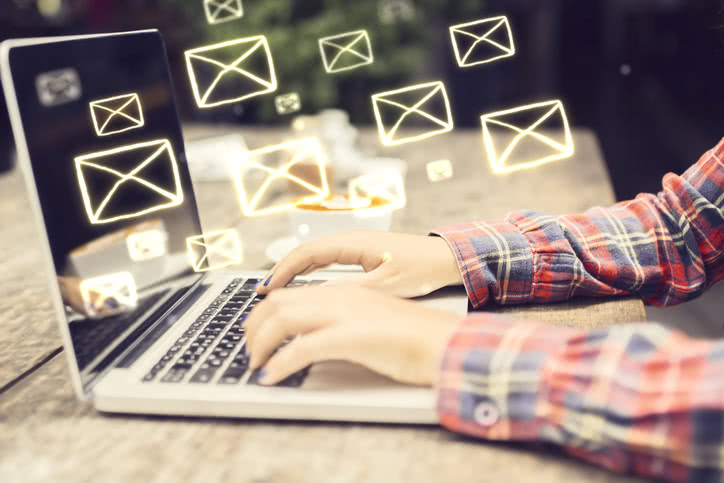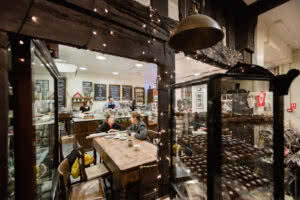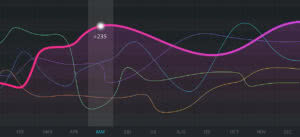91% of people check their email every day. But to catch potential attendees’ attention in a busy inbox, your event emails need to stand out from the crowd.
The first step to making email your most powerful promotional channel is to understand how you rank against the competition in a few key metrics. Based on survey responses from more than 340 event organisers across the UK and US, this exclusive event email marketing data will help you better compare your email performance against other events and see how you can improve.
To make your event email marketing the most effective, you need to pay attention to three key metrics: Your open rate, click-through rate, and unsubscribe rate. On average, event emails tend to see:
- 26% of recipients open their event emails
- 4.95% of recipients click links in their event emails
- 0.8% of recipients unsubscribe to their event emails
Here’s how to use each of those metrics to make your event’s email marketing campaigns more effective.
Event email marketing metric #1: Open rate
Your open rate is the percentage of recipients who open your email. The average event email has a 26% open rate — meaning 26% of recipients will open it — and a common range of 21-30%. Festivals and music events usually perform slightly better, with a 29% open rate, while conferences and professional events perform lowest at 23%.
If your email open rates fall below this range, it’s time to rethink your subject lines and the name of the sender of your emails. For example, you could test sending emails from your company name, from your own name, or from the name of a popular speaker at your event (with their permission, of course). You might also want to experiment with the time you send your emails.
For subject lines, aim to be specific and create a sense of urgency in about 50 characters or less. If you’re sending a save the date, or are sharing a promotional code that expires in 24 hours, include that in the subject line. And if you have the technology to personalise your emails (including the recipient’s name or city in the subject line), you can boost open rates by 20%.
Event email marketing metric #2: Click-through rate
The average click-through rate (CTR, the percentage of people who click a link in your email) for an event email is 4.95% — so just under 5% of people who receive event emails will click on a link in that email. Music events report the best results, with an average CTR of 5.43%, while classes and workshops average a 4.08% CTR.
One quick way you might be able to up your click-through rate is by adding more links in your emails, and making sure your links are at the top of the email. So, for example, if you have a “Buy Tickets” link at the bottom of your email, add it to the top, or include an alternative link to find out more information.
The best way to improve your CTR is to get more targeted — with your email list, or your content. For example, you could segment your email list by geo to reach a local audience, or send a discount just to previous attendees. (If you’re like 36% of US event organisers and use MailChimp for your email campaigns, you can sync your account with Eventbrite to automatically transfer attendee email addresses and other data between systems.)
If you don’t want to trim down your email distribution, it’s worth testing your content. Create two versions of your email (version “A” and version “B”). Send version A to one set of subscribers and version B to another limited set. Then send the better-performing email to the remainder of your email list.
Event email marketing metric #3: Unsubscribe rates
The average event email has an unsubscribe rate of 0.8% — so just under 1% of people who receive event emails unsubscribe from the database. If your rate is above 1%, the top of the median range for event emails, it’s worth becoming more targeted in your sends, or asking for feedback in a prompt on your unsubscribe page. Also be sure to include another communication option on your unsubscribe page; just because someone doesn’t want to receive your emails doesn’t mean they don’t want to hear from you on Facebook or another channel.
Learn more about how to improve your event emails in the 2017 Email Benchmarking Report.
Bonus: Reach a targeted audience through your ticketing partner’s event emails
Your ticketing and registration partner should also use emails to help you sell more. If you use Eventbrite, your event will automatically be included in emails to ticket buyers, targeted by their previous event activity. The personalised nature of these emails drives a higher open and click-through rate than the industry standard. To make your event the most appealing in these newsletters, make sure you have a concise event title, an intriguing thumbnail image, and select the most accurate event category when creating your event.
Your partner can also target sends based on event-goers friends’ behaviour, or their own engagement with your event. Eventbrite lets event-goers know if two or more of their Facebook friends are attending an event, and sends an email reminder to people who began to buy tickets to your event but didn’t complete their purchase.
Now that you’re ready to maximise your email campaigns, find out how to improve all aspects of your event marketing in 7 Strategies to Sell More With Your Ticketing & Registration Technology.





